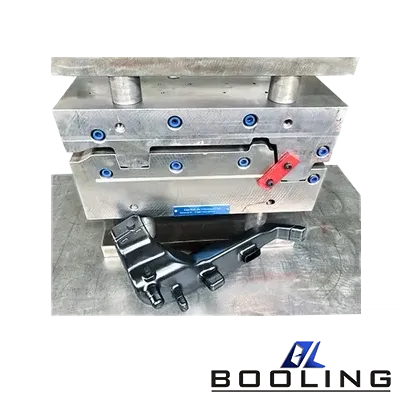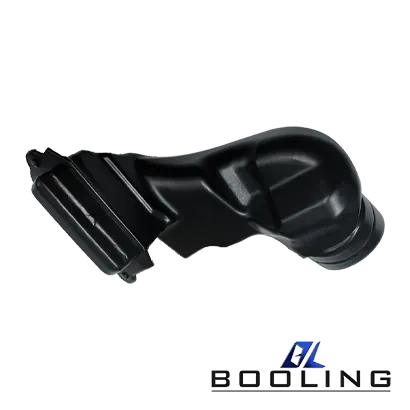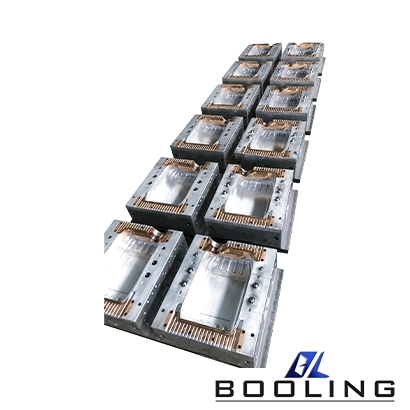Home > Guidelines for Extrusion Blow Moulding
3D blow molding is a commonly used method for manufacturing plastic containers and other plastic products. It uses polymer materials such as polyethylene, polypropylene, and polyvinyl chloride, which are heated, melted, and injected into a mold, and then a hollow shape is formed by injecting high-pressure air inside the mold.
The so-called extrusion blow moulding refers to obtaining a molten and partially plasticized tubular billet through extrusion, injecting compressed air into the billet, causing it to expand and adhere closely to the inner wall of the mold cavity, and shaping it. Finally, various hollow products are obtained by cooling and demolding. Unlike the principle of 3D blow molding, extrusion blow molding is divided into the manufacturing of preforms and plastic blow molding. By extrusion blow moulding, seamless daily containers of various sizes and shapes can be obtained.
In the process of extrusion blow moulding, the residual stress inside the product is relatively small, and it has good resistance to tensile, impact, and bending deformation, as well as high strength and durability. Moreover, after the extrusion of the billet, it directly enters the blow molding stage, which has high efficiency.
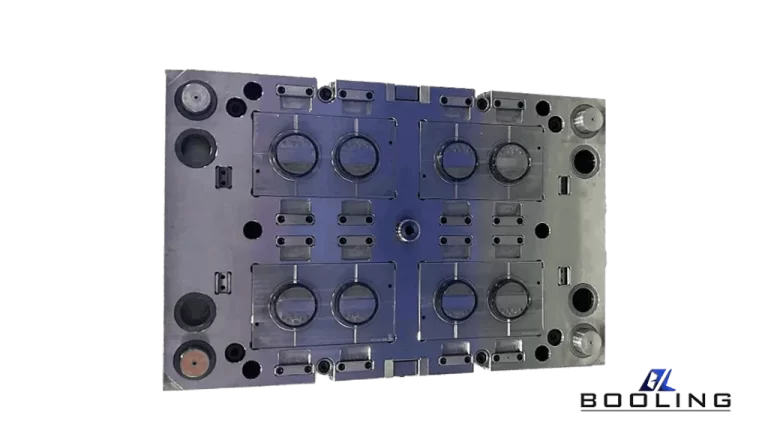
Factors Affecting Extrusion Blow Moulding
The process of extrusion blow moulding is special and requires consideration of many molding influencing factors, including:
- Raw Materials
The selection of raw materials is the primary step in the blow molding process. Based on the characteristics of fluidity and viscosity, blow molding manufacturers generally choose HDPE blow molding technology.
- Mouth Mold
The size of the mold determines the size of the embryo, so manufacturers generally require that the inner surface of the mold be sufficiently smooth, which is beneficial for obtaining a smooth embryo and producing smooth surface parts.
- Screw Speed
The rotational speed of the screw is an important factor affecting the extrusion blow moulding of the embryo. By controlling the extrusion speed, factors such as product quality and wall thickness can be changed, which can greatly reduce the surface sagging defects of the embryo.
- Temperature
The temperature of extrusion blow moulding depends on the properties of the plastic resin. If the temperature is too low, the plastic will not be fully plasticized, and the surface of the mold will be rough. If the temperature is too high, it will cause uneven wall thickness of the mold, which will affect the aesthetics of subsequent products.
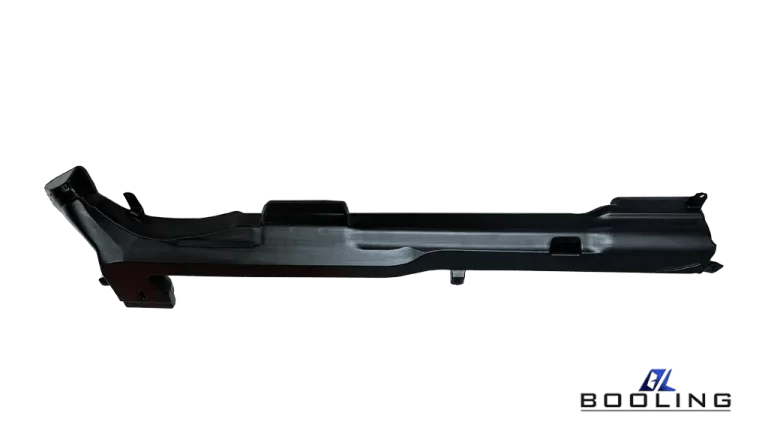
What are The Advantages of Extrusion Blow Moluding?
Extrusion blow moulding technology is becoming increasingly mature and widely used. There are many reasons why it is chosen by manufacturers, including:
- Flexible and Controllable Process
The extrusion blow moulding process is more flexible, making it easier for manufacturers to control its quality, and the production process has a high degree of continuity, so the quality of the manufactured products is relatively stable. It can also produce different products according to different designs and requirements, with high flexibility.
- High Continuity
The continuity of basic blow molding production is high, and it can produce rods, pipes, films, plates, profiles, cables, and monofilaments of any length.
- High Degree of Automation
Modern extruders are usually equipped with automatic control systems and robotic arms during operation, with a high degree of automation. It can complete many automated production processes, greatly improving production efficiency and human error.
- Save Raw Materials
The products produced by extrusion blow moulding process can save raw materials, and the thermoplastic used can be recycled and reused, which has a certain environmental performance. The extrusion process can reduce the generation of waste because it is a continuous production method that can better utilize or recycle raw materials, thereby reducing material waste.
- Wide Application Range
Extrusion molding technology is widely used in the processing and molding of materials such as plastics, rubber, and fibers, especially in the production of plastic products. The vast majority of thermoplastic and some thermosetting plastics can be processed by extrusion blow moulding. This method can also incorporate colorants and color powders to create products with a wider variety of colors and shapes.
Extrusion Blow Moulding Process
As the most widely used technology in blow molding, the process flow of extrusion blow molding mainly includes:
- During extrusion, the polymer is heated melted, and plasticized into a tubular billet.
- When the billet reaches the predetermined length, the blow molding mold quickly closes and clamps the billet between the two halves of the mold.
- Introduce compressed air, inflate the billet, adhere it tightly to the mold cavity, and depict details.
- Then enter the cooling and solidification stage.
- Open the mold and take out the product.
- Trim products and recycle scraps from thermoplastic processing.
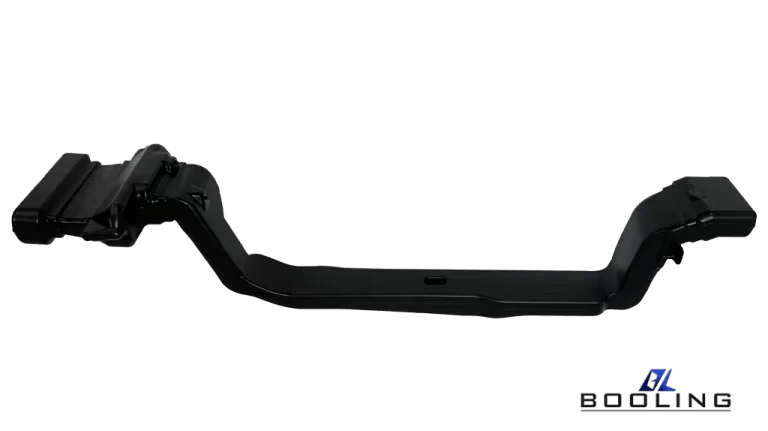
Application of Extrusion Blow Moulding
Due to its highly prominent advantages and characteristics, extrusion blow moulding technology can be widely applied in:
-Car
Extrusion blow moulding can efficiently manufacture automotive parts such as fuel tanks, water tanks, bumpers, and air ducts. Automotive parts made by blow molding have characteristics such as oil resistance, temperature resistance, and corrosion resistance, and can be used for a long time in harsh environments.
-Food Packaging
Squeezing blow molded products are widely used by manufacturers in the field of food packaging, such as beverage bottles, food packaging, freshness boxes, etc. Blow-molded products have good air tightness, can withstand low temperatures, and also have certain aesthetic characteristics such as transparency and lightness, making them very suitable for packaging and transporting food.
-Medical Industry
In the medical industry, extrusion blow moulding technology is suitable for producing various medical devices such as infusion sets, syringes, oxygen concentrators, blood bags, medication bottles, etc. Blow molded products have the characteristics of nontoxicity, antibacterial, and hygiene, and will not produce any rejection with the human body, which can effectively ensure the safety of medical workers and patients.
-Daily Necessities
Squeezing blow molded products have also been widely used by manufacturers in the daily necessities industry, such as laundry detergent bins, garbage bins, water buckets, and other daily utensils. The market share of these products is considerable. At the same time, they have the characteristics of high strength, easy cleaning, long lifespan, and durability, making them very suitable for use in homes and public places.
-Chemical Industry
Blow molding technology can produce various types of chemical storage containers, packaging bags, and industrial pipelines. Especially for highly corrosive chemicals, blow molding can produce high-density plastic containers, which are very suitable for storing and transporting these highly dangerous goods.
-Construction Industry
The products manufactured by extrusion blow moulding have a certain degree of precision, as well as outstanding characteristics such as corrosion resistance and insulation. They can be applied to drainage systems, insulation boards, pipelines, panels, etc. in the construction industry.
-Agricultural Industry
In the field of agriculture, the application of extruded blow-molded products mainly includes the packaging of agricultural materials and agricultural films, such as the packaging of fertilizers and pesticides. Extrusion blow molded products have better weather resistance and impact resistance, which helps protect agricultural products from adverse weather conditions.
-Electronic Industry
Squeezing blow molding technology has certain insulation properties according to the different properties of the materials used, which meets the requirements of some electronic products, such as plastic products such as electronic product casings and insulators.
Maintenance of Extrusion Blow Moulding Equipment
Even the most excellent extrusion blow moulding equipment and molds, if not maintained and serviced, will have a certain impact on the subsequent manufacturing process.
Before the formal blow molding process begins, it is necessary to maintain and upkeep the extrusion equipment, such as adding lubricating oil to each movable and easily worn part. This can make the subsequent production and processing smoother, avoid equipment jamming, and slow and insensitive movements, increase maintenance and processing time, and slow down efficiency. Once there is a problem with the operation of blow molding equipment, it will greatly affect the operation of the entire production process and the quality of the final product. After adding lubricating oil, the equipment cannot be immediately started. It is necessary to preheat the equipment for a certain period to ensure that there are no problems before feeding for processing and production.
After shutting down the blow molding equipment, it is necessary to reset each speed to zero and close the mold. The mold should be coated with rust inhibitor or rust-proof film to extend its service life. Before turning off the main power, the manufacturer needs to lubricate and maintain the equipment again, add lubricating oil, clean the equipment, and prevent rusting.
In addition to turning on and off the equipment, maintenance of the extrusion blow moulding mold is also very necessary, requiring regular cleaning and polishing. This step cannot be omitted, which can better ensure the coordination between the mold and equipment and produce higher quality and high-precision blow molded products.
The attention points for extrusion blow moulding are far less than these, including the setting of some parameters such as temperature, pressure, time, etc. In the forming process, multiple factors need to be considered to shape better products.
Blow Molding Related Content
Applied’s expertise in modifying materials at atomic levels and on an ihdustrial scaleenables our customers to transform possibilities into reality.

